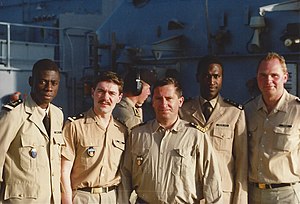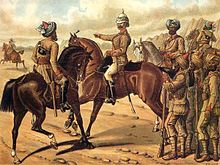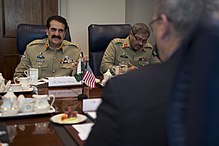
Olive is a dark yellowish-green color, like that of unripe or green olives.

The Battle Dress Uniform (BDU) is a camouflaged combat uniform that was used by the United States Armed Forces as their standard combat uniform from the early 1980s to the mid-2000s. Since then, it has been replaced or supplanted in every branch of the U.S. Armed Forces.

A military uniform is a standardised dress worn by members of the armed forces and paramilitaries of various nations.

Chino cloth is a twill fabric originally made from 100% cotton. The most common items made from it, trousers, are widely called chinos. Today it is also found in cotton-synthetic blends.

A combat uniform, also called field uniform, battledress or military fatigues, is a casual type of uniform used by military, police, fire and other public uniformed services for everyday fieldwork and combat duty purposes, as opposed to dress uniforms worn in functions and parades. It generally consists of a jacket, trousers and shirt or T-shirt, all cut to be looser and more comfortable than more formal uniforms. Design may depend on regiment or service branch, e.g. army, navy, air force, marines, etc. In the army branches, fabrics tend to come in camouflage, disruptive pattern or else green, brown or khaki monochrome, in order to approximate the background and make the soldier less visible in nature. In Western dress codes, field uniform is considered equivalent to civilian casual wear. As such, field uniform is considered less formal than service dress uniform, generally aimed at office or staff use, as well as mess dress uniform, and full dress uniform.

Imperial Japanese Army uniforms tended to reflect the uniforms of those countries who were the principal advisors to the Imperial Japanese Army at the time.
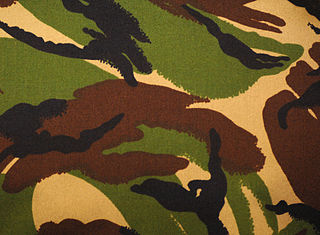
Disruptive Pattern Material (DPM) is the commonly used name of a camouflage pattern used by the British Armed Forces as well as many other armed forces worldwide, particularly in former British colonies.

The U.S. Army's M1943 uniform was a combat uniform manufactured in windproof cotton sateen cloth introduced in 1943 to replace a variety of other specialist uniforms and some inadequate garments, like the M1941 Field Jacket. It was used through the remainder of World War II and into the Korean War with modifications before being replaced by the OG-107 uniform beginning in 1952.
The United States Army in World War II used a variety of standard and non-standard dress and battle uniforms, which often changed depending upon the theater of war, climatic environment, and supply exigencies.

The uniforms of the United States Navy include dress uniforms, daily service uniforms, working uniforms, and uniforms for special situations, which have varied throughout the history of the navy. For simplicity in this article, officers refers to both commissioned officers and warrant officers.

Service dress uniform is the informal type of uniform used by military, police, fire and other public uniformed services for everyday office, barracks and non-field duty purposes and sometimes for ceremonial occasions. It frequently consists of a jacket, trousers, dress shirt, and neck tie, along with orders, medals, and insignia. Design may depend on regiment or service branch, e.g. army, navy, air force, marines, etc. In Western dress codes, a service dress uniform is a permitted supplementary alternative equivalent to the civilian suit - sometimes collectively called undress or "dress clothes". As such, a service dress uniform is considered less formal than both full dress and mess dress uniforms, but more formal than combat uniforms.

The Army Service Uniform (ASU) is a military uniform for wear by United States Army personnel in garrison posts and at most public functions where the Army Combat Uniform is inappropriate. As of 2021, the Army has two service uniforms for use by its personnel. The Army Green Service Uniform, announced in 2018 and authorized in 2020, is used primarily for daily use in situations where civilians wear business attire, such as office settings or official meetings.

The United States Marine Corps (USMC) prescribes several types of military uniform to distinguish its service members from other armed services, depending on the situation.
The Jacket, Field, O.D. is a field jacket that was used by US Army soldiers, most famously during the beginning of World War II. In 1941 it started to be phased in as a replacement for the wool four-pocket service coat of World War I, but around 1943 it was replaced in turn by the improved M1943 model. Owing to wide adoption, the M1941 is usually recognized as a symbol of the World War II American G.I. The jacket was made in a light shade of olive drab called O.D. number 2.

The Afghanka is a type of military uniform system developed and issued by the Soviet Army in the early 1980s, still in use today in some Post-Soviet states in many different variants. The name Afghanka is an unofficial popular slang term in Russian for the uniform, derived from its prolific use during the Soviet–Afghan War. All the non-sand coloured versions of the M88 are not called Afghanka.

Type 07 is a group of military uniforms used by all branches of the People's Liberation Army (PLA) of the People's Republic of China (PRC) and the paramilitary Chinese People's Armed Police Force. Introduced in 2007, the Type 07 uniforms replaced the Type 87 service uniforms used by regular units and the Type 97 Service Dress uniforms of the People's Liberation Army Hong Kong Garrison and the People's Liberation Army Macau Garrison. The Type 07 uniforms were first seen in late June 2007 during a celebration ceremony for the 10th anniversary of the Transfer of sovereignty over Hong Kong.

The following is a general overview of the Heer main uniforms, used by the German Army prior to and during World War II.
The uniforms of the United States Army distinguish soldiers from other service members. U.S. Army uniform designs have historically been influenced by British and French military traditions, as well as contemporary U.S. civilian fashion trends. The two primary uniforms of the modern U.S. Army are the Army Combat Uniform, used in operational environments, and the Army Green Service Uniform, worn during everyday professional wear and during formal and ceremonial occasions that do not warrant the wear of the more formal blue service uniform.
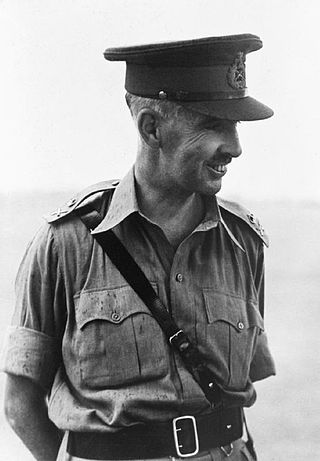
Khaki drill (KD) is the British military term for a type of fabric and the military uniforms made from them.
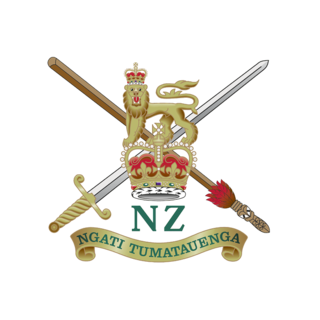
The New Zealand Army uniform has changed over the years from that of the original Armed Constabulary of the 1800s to the modern Army Combat Uniform style in use by the majority of world armies today. While British Army influence has always been strong, distinctive New Zealand features have gradually developed. From 2013 the New Zealand Army uniform underwent a complete redesign with a new and distinctive camouflage pattern unique to the NZDF.
